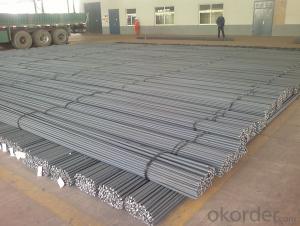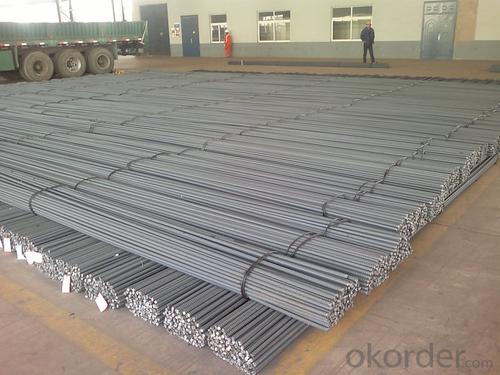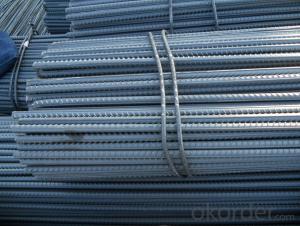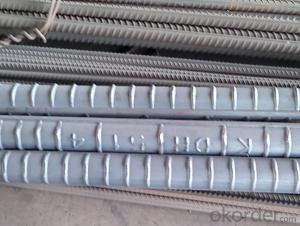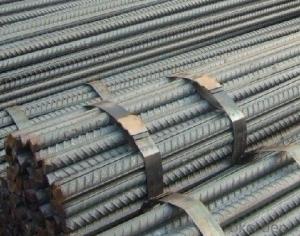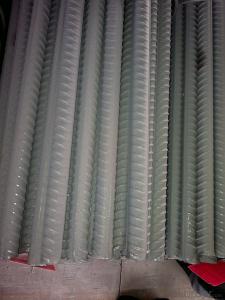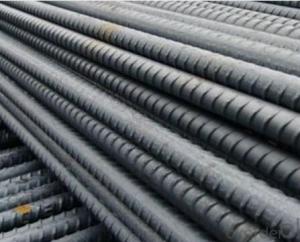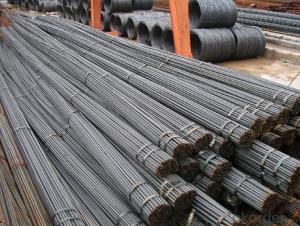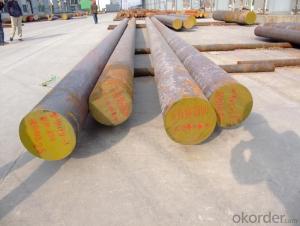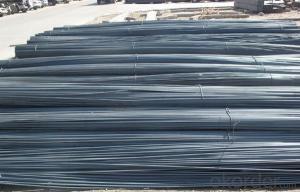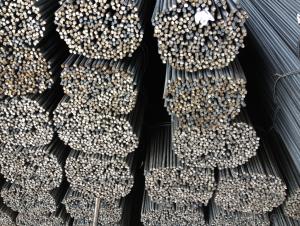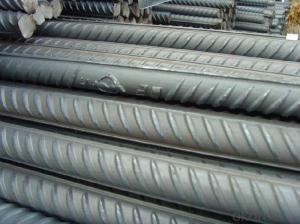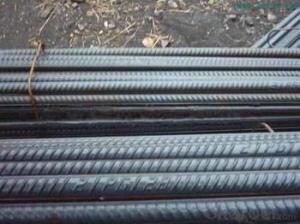Steel Rebar, Deformed Steel Bar, Iron Rods for Construction or Concrete
- Loading Port:
- Tianjin
- Payment Terms:
- TT OR LC
- Min Order Qty:
- 24 m.t.
- Supply Capability:
- 23000 m.t./month
OKorder Service Pledge
OKorder Financial Service
You Might Also Like
REINFORCING DEFORMED STEEL BAR
ACORDING TO ASTM/BS/FEE/ EXTC....
LENGTH:ANY LENGTH
PLEASE SEND US YOUR REQUEST WITH FULL DETAILS FOR BEST OFFER
REINFORCING DEFORMED STEEL BAR
ACORDING TO ASTM/BS/FEE/ EXTC....
LENGTH:ANY LENGTH
Specifications
Certificates: CE & ISO9001:2000
Material: hrhrb400 ,hrb500, BS4449, ASTM A615, SD400
length:6-12
Size: 6mm-40mm
HRB 400E Hot rolled steel rebar
Type | steel rebar |
Standard Grade | a. GB1499.2-2007, HRB335, HRB400E, etc. |
b. ASTM A615 Gr.40, Gr.60, etc. | |
c. BS4449/1997, etc. | |
Diameter | 6mm-32mm etc. |
Length | 6m, 8m, 9m,12m as standard |
Application | construction industry with all types of reinforced concrete structures and so on |
Packing | standard export packing, or as per customers' requirement |
Quality | First quality |
Delivery time | Right now after the deposit. |
Others | 1. all the production process are made under the ISO 9001:2001 strictly |
2. our products conform to all the standards | |
3. we can offer special specification products as per our customers |
We are willing to establish long business relations with customers all over the world. Any comments and requirement will be appreciated. It is our big pleasure of serving you.
If you are interested in our products, please contact us for more information we can supply you with competitive price and good service.
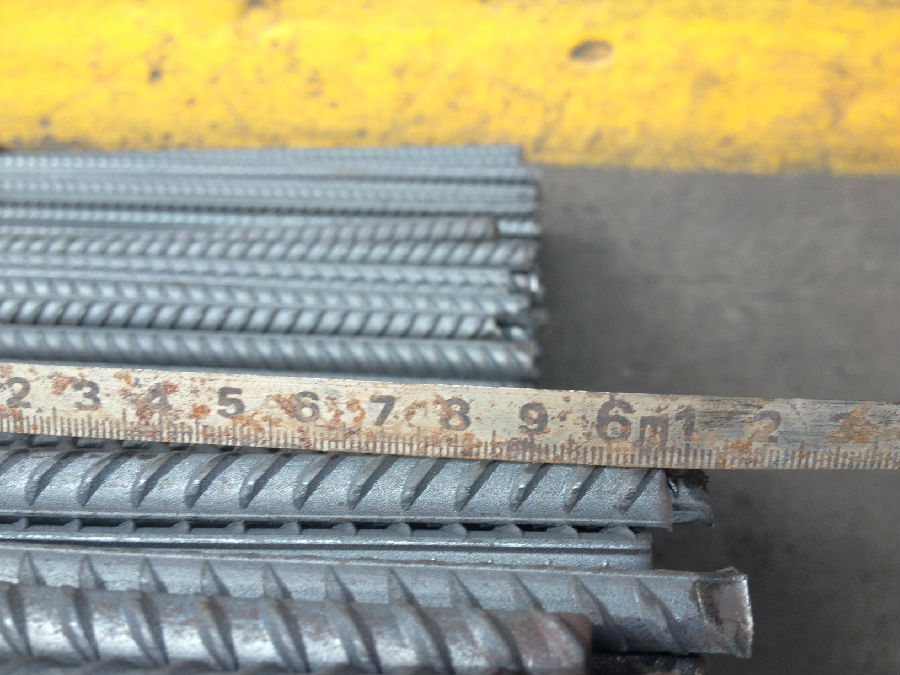
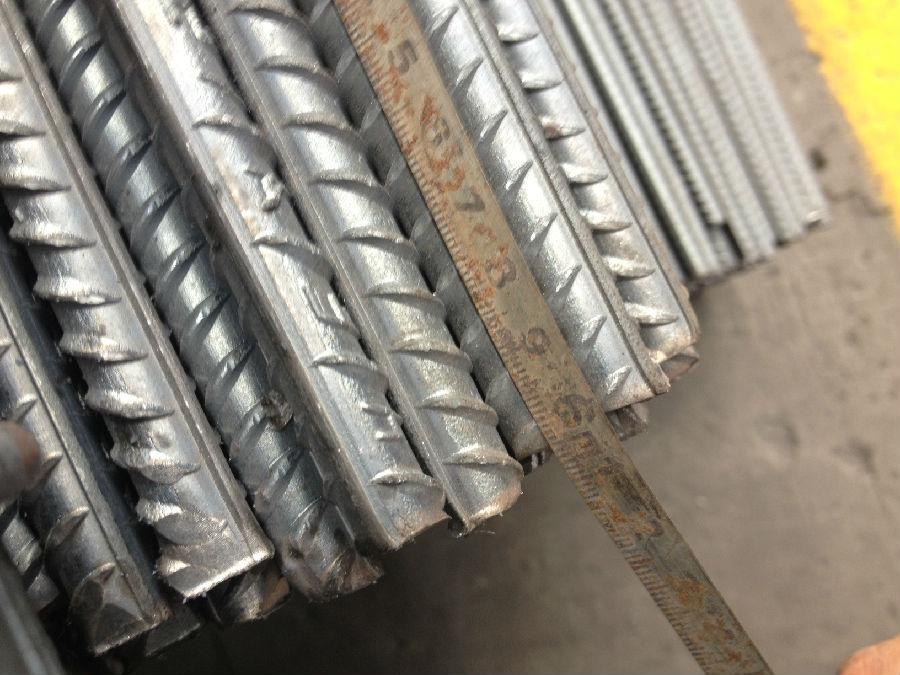
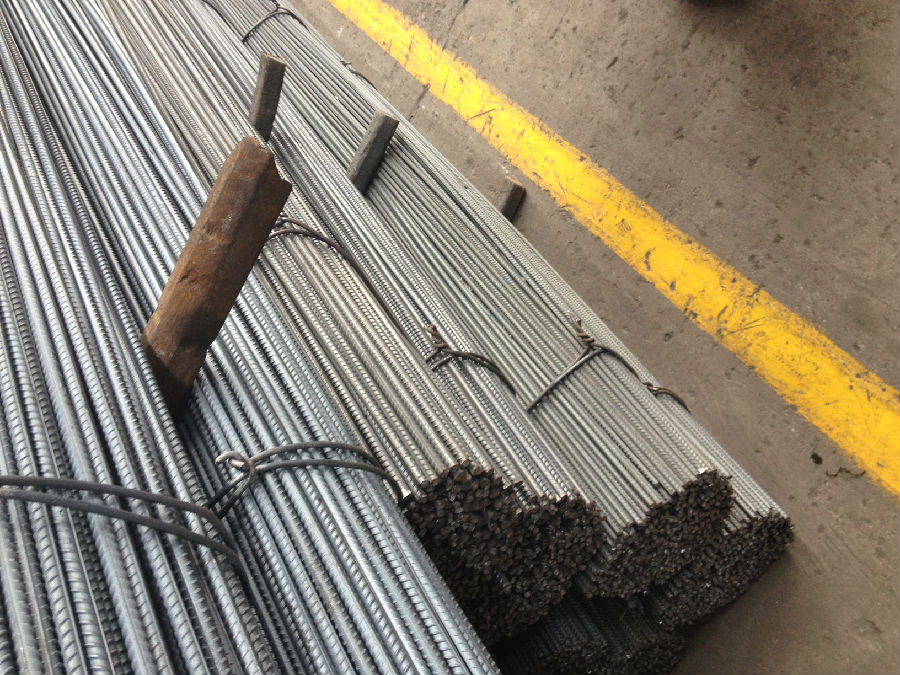
- Q: What is the role of steel rebars in load-bearing structures?
- The role of steel rebars in load-bearing structures is crucial and multifaceted. Steel rebars, short for reinforcing bars, are used to provide reinforcement and strength to concrete structures. They are typically made of carbon steel and are strategically placed within the concrete to counteract its low tensile strength and enhance its ability to withstand tension and compression forces. In load-bearing structures, such as buildings, bridges, dams, and other infrastructure projects, steel rebars play several key roles: 1. Reinforcement: Concrete on its own has excellent compressive strength but lacks tensile strength. Steel rebars are embedded within the concrete to absorb tensile forces and prevent cracks from forming or propagating. By reinforcing the concrete, they help distribute and manage the loads more effectively, ensuring the structural integrity and durability of the building. 2. Load distribution: Steel rebars assist in distributing the weight and load-bearing capacity of the structure more evenly. They help to transfer the applied loads, such as the weight of the structure itself, live loads, or environmental forces, to the foundation or other supporting components. This redistribution of forces prevents localized damage and ensures the structure can handle various external and internal loads. 3. Flexibility and ductility: Steel rebars provide flexibility and ductility to the concrete. This means that even if the structure is subjected to heavy loads, vibrations, or external forces, the rebars can absorb and distribute the stress across the structure, minimizing the risk of failure. Steel rebars are particularly effective in areas prone to earthquakes, where they help to absorb and dissipate seismic energy. 4. Longevity and durability: By reinforcing the concrete, steel rebars significantly increase the longevity and durability of load-bearing structures. They help to prevent cracking, shifting, and other structural issues that may arise due to aging, environmental factors, or excessive loading. This extended lifespan ensures the safety and stability of the structure over time. Overall, steel rebars are crucial components in load-bearing structures as they provide reinforcement, enhance load distribution, increase flexibility, and improve the longevity and durability of the structure. Their inclusion allows for the construction of safer, stronger, and more resilient buildings and infrastructure projects.
- Q: What are the environmental impacts of using steel rebars in construction?
- The environmental impacts of using steel rebars in construction include the extraction and processing of raw materials, such as iron ore, which can contribute to deforestation, habitat destruction, and emissions of greenhouse gases. The production of steel also requires significant amounts of energy and water, leading to carbon dioxide emissions and potential water pollution. Additionally, the disposal of steel waste and the potential for corrosion can contribute to land and water pollution. However, steel rebars can also have positive environmental impacts, as they are durable, recyclable, and can contribute to the overall sustainability of a structure.
- Q: Are there any disadvantages or limitations of using steel rebars?
- Yes, there are some disadvantages or limitations of using steel rebars. Firstly, steel rebars are prone to corrosion when exposed to moisture or harsh environmental conditions, which can weaken the structure over time. Secondly, steel rebars are heavy and require heavy machinery for transportation and installation, making them less suitable for certain construction projects. Additionally, steel rebars can cause electromagnetic interference, which can interfere with electronic devices or communication systems in some cases. Lastly, steel rebars have a high thermal conductivity, which can result in energy losses or thermal bridges if not properly insulated.
- Q: What is the process of connecting steel rebars to structural members?
- The process of connecting steel rebars to structural members is typically done through a method called rebar tying. This involves placing the rebars in the desired positions within the structural member, and then using wire or steel tie rods to securely fasten the rebars to the member. The ties are typically twisted or tightened to ensure a strong and reliable connection between the rebars and the structural member. This process is crucial in reinforcing concrete structures and ensuring their strength and stability.
- Q: Can steel rebars be used in underground parking structures?
- Yes, steel rebars can be used in underground parking structures. They are commonly used as reinforcement in concrete to strengthen the structure and increase its load-bearing capacity. Steel rebars provide durability and structural integrity, making them suitable for underground parking structures that require robust support and resistance to corrosion.
- Q: Can steel rebars be used in historical restoration projects?
- Yes, steel rebars can be used in historical restoration projects. They provide structural reinforcement and can help restore the stability and integrity of historical structures while maintaining their original appearance. However, careful consideration should be given to ensure that the use of steel rebars is in accordance with preservation guidelines and does not compromise the historical significance of the structure.
- Q: How do steel rebars perform in corrosive environments?
- Steel rebars perform well in corrosive environments due to their inherent resistance to corrosion. The presence of a protective oxide layer on the surface of the steel helps prevent direct contact with corrosive elements. However, in highly aggressive conditions, such as exposure to saltwater or acidic environments, rebars may still be susceptible to corrosion over time. Therefore, appropriate measures, like the use of protective coatings or stainless steel rebars, should be considered for enhanced durability in such environments.
- Q: How do steel rebars affect the construction cost of high-rise buildings?
- Steel rebars have a significant impact on the construction cost of high-rise buildings. These reinforced steel bars are essential for providing strength and stability to the structure, especially in high-rise buildings that face greater structural loads. Firstly, the cost of steel rebars themselves can be a substantial portion of the overall construction budget. The price of steel rebars is subject to market fluctuations, and as such, any increase in steel prices can directly impact the construction cost. Additionally, the quantity and quality of rebars required for a high-rise building are typically higher compared to low-rise structures, further contributing to the overall cost. Moreover, the installation of steel rebars involves skilled labor and specialized equipment, which adds to the construction cost. The process of reinforcing concrete with steel rebars requires careful planning, precise placement, and adherence to construction codes and safety standards. This necessitates the employment of experienced and qualified workers, resulting in higher labor costs. Furthermore, the use of steel rebars helps improve the durability and longevity of high-rise buildings. By providing reinforcement, rebars enhance the structural integrity of the building, making it more resistant to various forces such as earthquakes, wind, and vibrations. This, in turn, reduces the maintenance and repair costs over the building's lifespan, making the initial investment in steel rebars a worthwhile expense. Lastly, steel rebars contribute to the overall construction timeline and project schedule. As a critical component of the building's structure, the installation of rebars is typically time-consuming. Delays or errors in this process can result in project delays and additional costs. Therefore, proper planning, coordination, and supervision are essential to ensure the efficient and timely installation of rebars, minimizing any potential cost overruns. In conclusion, steel rebars play a crucial role in the construction of high-rise buildings, affecting the overall cost significantly. While the direct cost of rebars themselves, labor, and specialized equipment contribute to the construction expenses, their use ultimately enhances the building's strength, durability, and longevity. Therefore, considering the long-term benefits and the importance of structural integrity, the inclusion of steel rebars is necessary, despite their impact on the construction cost.
- Q: Can steel rebars be used in structures with high chemical resistance requirements?
- No, steel rebars cannot be used in structures with high chemical resistance requirements as they are susceptible to corrosion and deterioration when exposed to harsh chemicals.
- Q: What are the sizes available for steel rebars?
- Steel rebars, also known as reinforcing bars, are available in various sizes depending on the specific application and construction requirements. Common sizes for steel rebars include #3 (3/8 inch diameter), #4 (1/2 inch diameter), #5 (5/8 inch diameter), #6 (3/4 inch diameter), #7 (7/8 inch diameter), #8 (1 inch diameter), #9 (1 1/8 inch diameter), #10 (1 1/4 inch diameter), #11 (1 3/8 inch diameter), #14 (1 3/4 inch diameter), and #18 (2 1/4 inch diameter). These sizes may vary based on regional standards and project specifications.
Send your message to us
Steel Rebar, Deformed Steel Bar, Iron Rods for Construction or Concrete
- Loading Port:
- Tianjin
- Payment Terms:
- TT OR LC
- Min Order Qty:
- 24 m.t.
- Supply Capability:
- 23000 m.t./month
OKorder Service Pledge
OKorder Financial Service
Similar products
Hot products
Hot Searches
Related keywords
